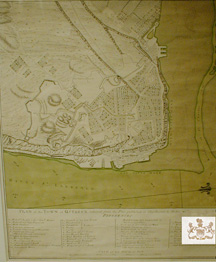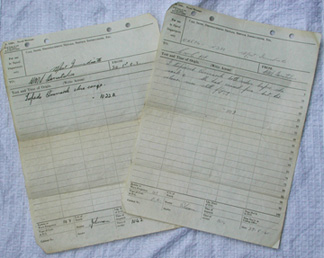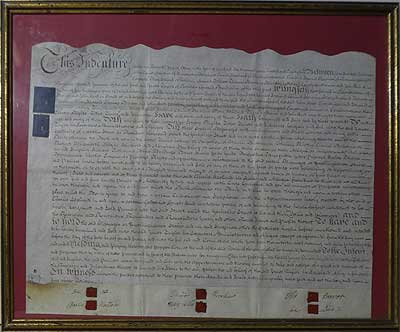History
In the spring of 1756 Patrick MacKellar was appointed chief engineer
of the British forts of Ontario and Oswego.
During August he was engaged in repairing and strengthening the
frontier forts (formally Pepperell or Chouagen) on the Oswego River,
when, on the night of the 10th. they were surprised and attacked
by a French force of 3,000 men.
In spite of a heroic defence, the forts eventually surrendered
during the afternoon of August 14. Sixteen hundred prisoners, including
MacKellar and 79 other officers, were captured. MacKellar was taken
to Quebec City as a prisoner of war where he was kept in fairly
close restraint. He was able, however to make detailed notes on
the city's defences, until some time in September when he was transferred
to Montreal. In December of 1757, following a meeting with his
fellow prisoner-of-war, Moss, it would appear that MacKellar had
time to draw upon his notes in order to compile the above report
and arrange the production of the map.
On a salary of a pound a day, the now Major and Chief Engineer,
MacKellar accompanied General James General Wolfe, Supreme Commander
of the British Land Forces in America, to attack Quebec.
In May 1759 the army of 8,535 men assembled at Louisbourg, renamed
Pittburg in honour of the Prime Minister, (the fortress of Louisbourg,
having been reduced by Amherst the previous year, during which
siege MacKellar distinguished himself.)
During the siege of Quebec the intelligence contained in this
report proved to be invaluable.
Despite being wounded in the attack from Montmorency, MacKellar
scaled the heights of Abraham with Wolfe, and took over the command
from Wolfe when he fell. Quebec capitulated on September 17.
Upon occupation by the British, Mackellar strengthened the defences,
thus enabling it to withstand the 1760 French attempt to retake
the city. Although MacKellar was severely wounded during the attack
at Sillery, he later took part in the capture of Montreal and other
engagements, thus completing the fall of France in Canada.
Mackellar also contributed much to the survey and defences of
Halifax, and various engagements in the West Indies during the
expulsion of the French, eventually being promoted Colonel and
Director of engineers on Minorca.










